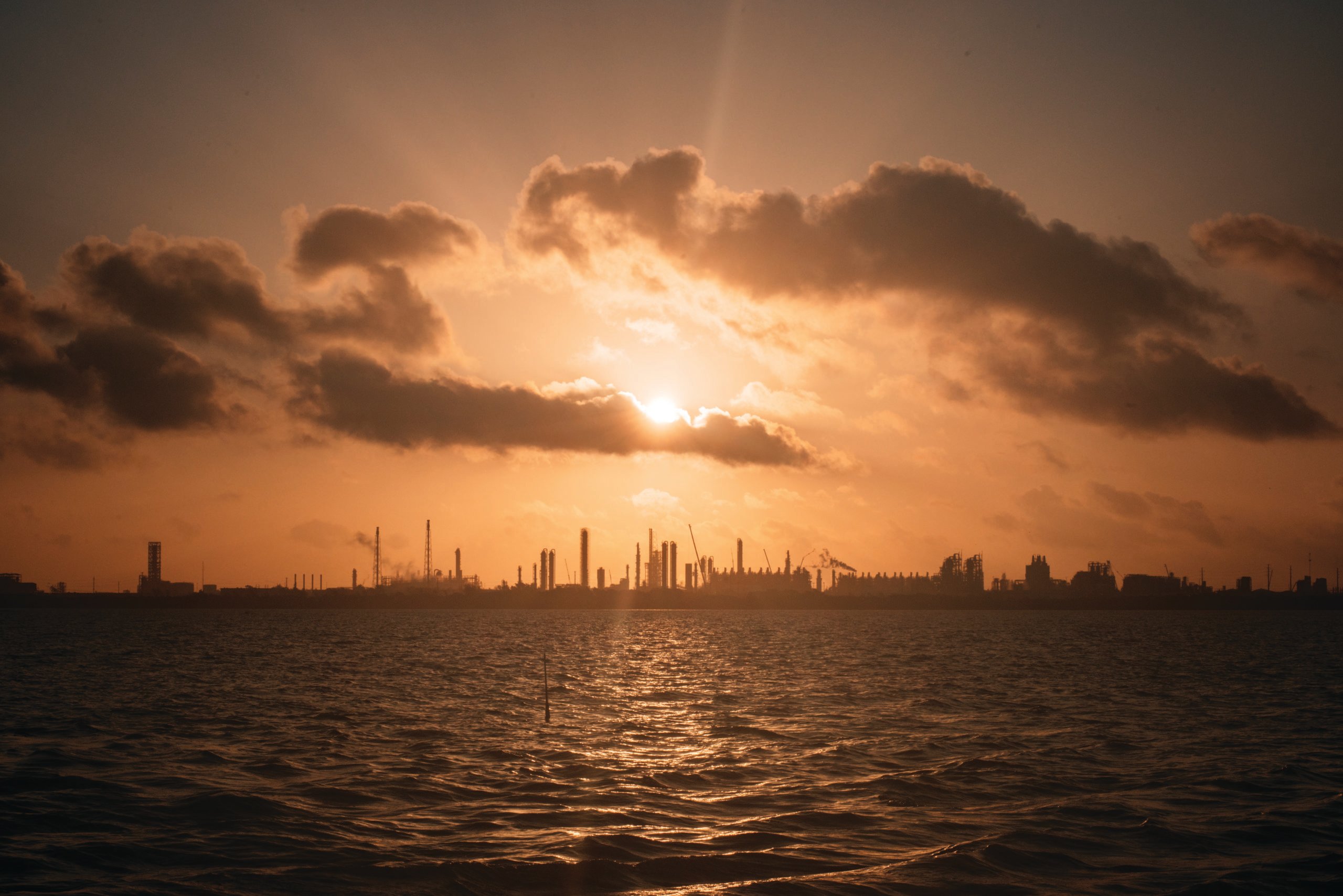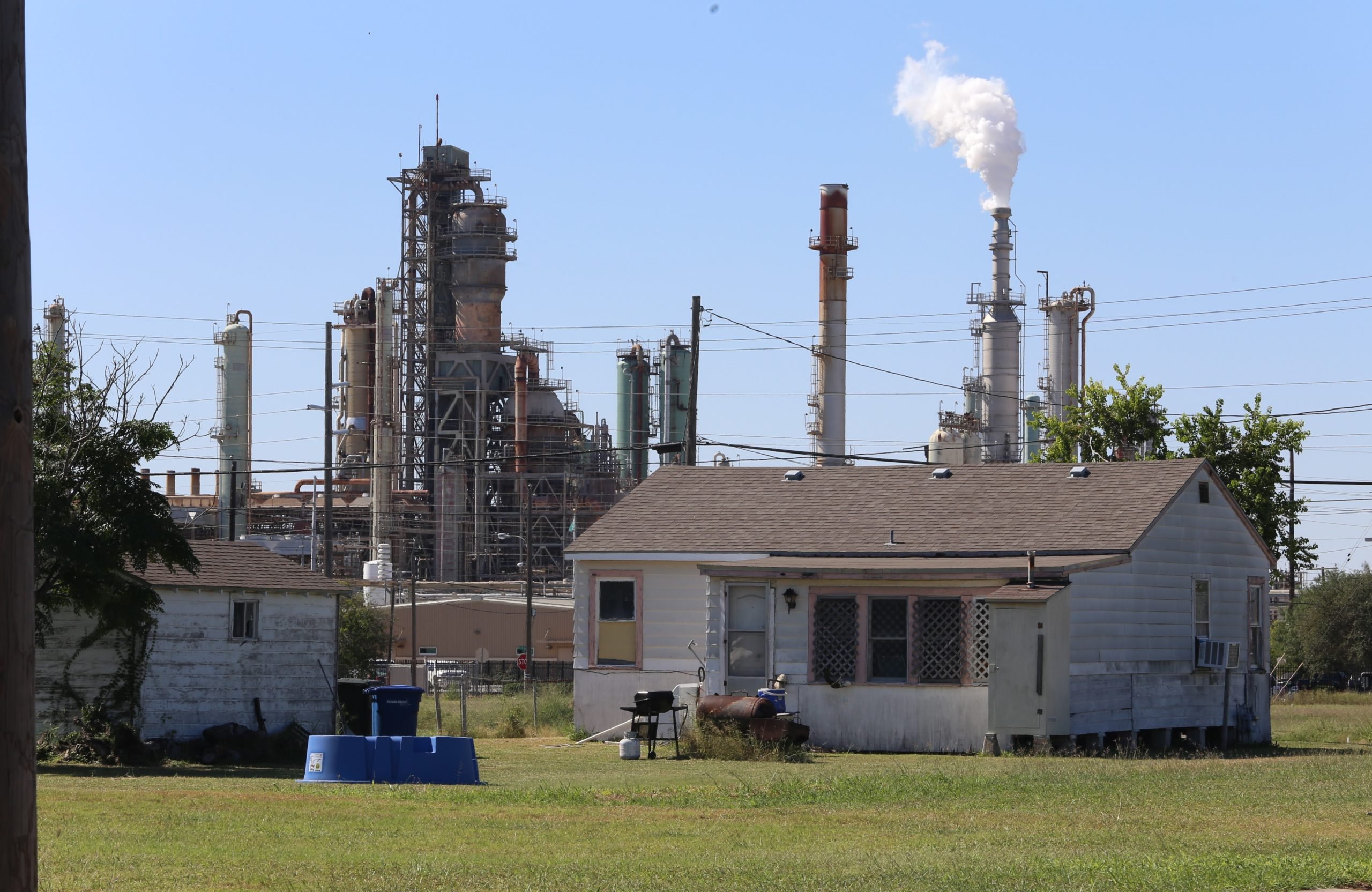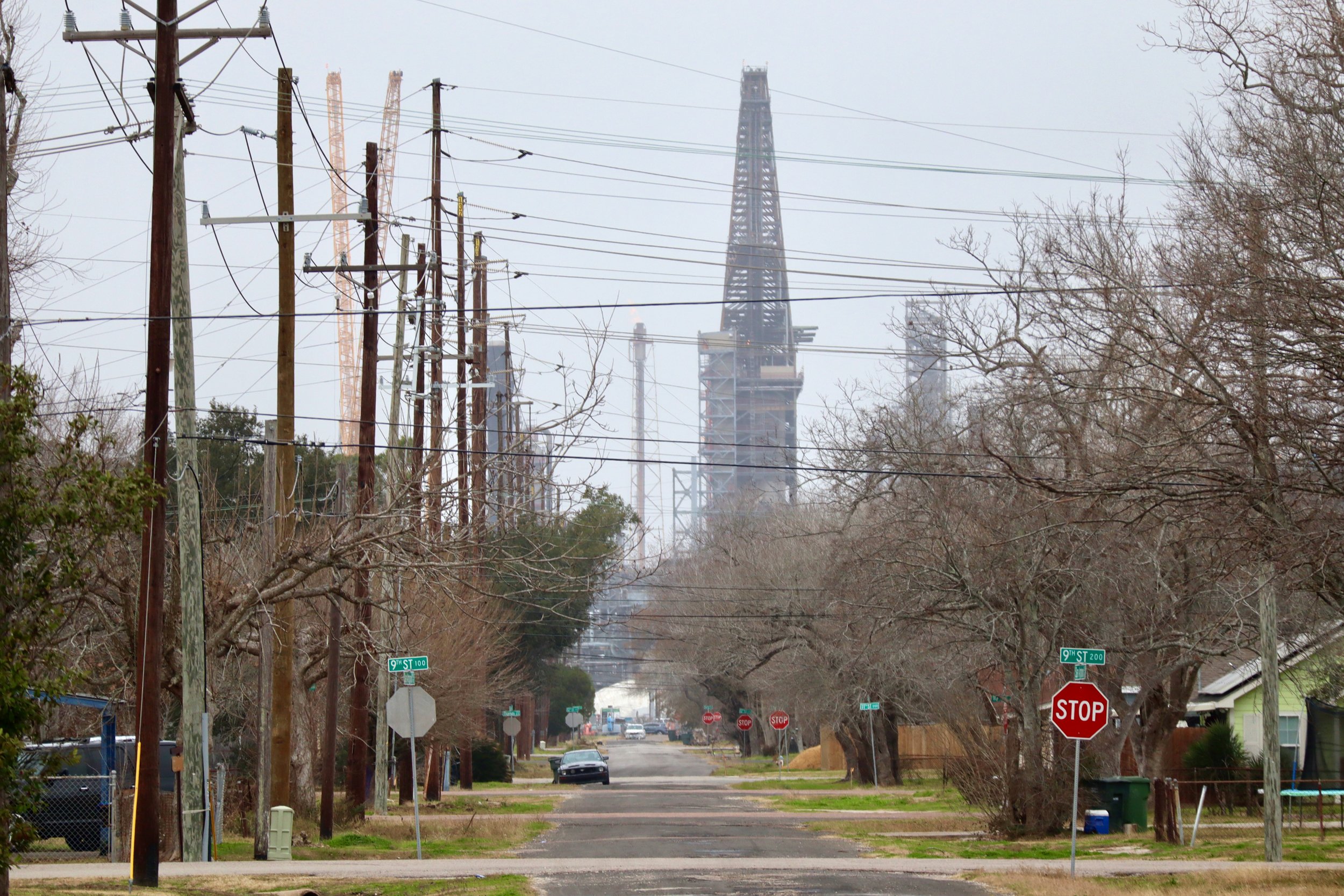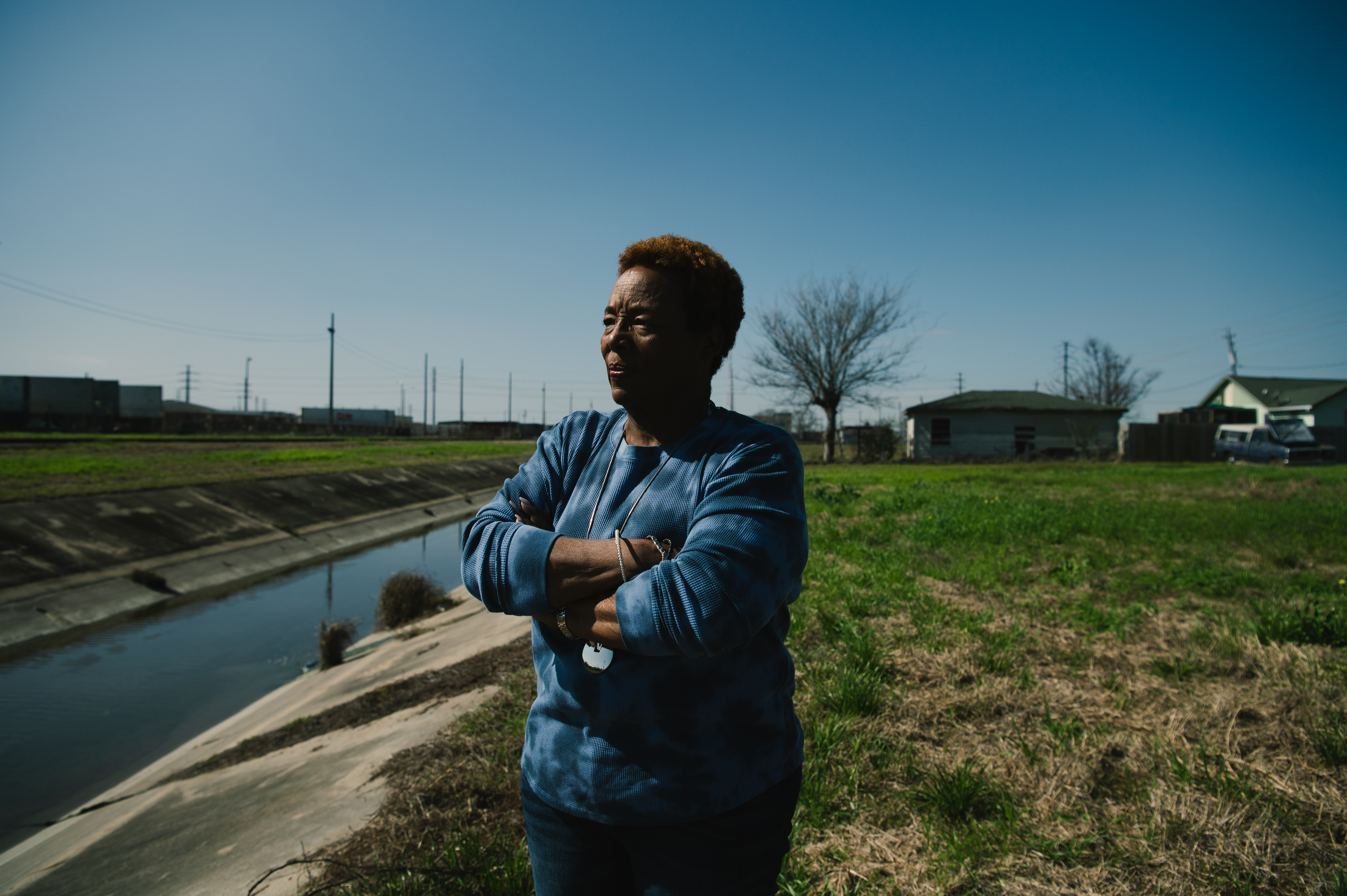This article was published in partnership with InsideClimate News, a nonprofit, independent news outlet that covers climate, energy and the environment, and NBC News.
Just after dawn on a hot, clear summer morning, Myron “Buster” Spree and his friends eased their flat-bottom fishing boat away from the public pier in Point Comfort and steered into the blue-green waters of Lavaca Bay. Along the shoreline, they could see the sprawling ruins of the now-shuttered Alcoa aluminum smelter and refinery for alumina ore, which is used to make aluminum.
As a much younger man, Spree worked for the company in the 1970s, when a union president asked the U.S. Department of Justice to investigate Alcoa for dumping about 300 pounds of mercury a day and exposing workers to toxic vapors. From 1966 to 1979, the company spewed an estimated 1.2 million pounds of mercury into these waters.
Spree gazed across the shimmering waves and shrinking sandbars and lamented how many birds and sea creatures, once abundant here, seem to have vanished. Lavaca Bay used to be one of the most productive shrimping areas in coastal Texas, but no more. The dolphins have mostly disappeared, and so have the tiny crabs, clams, and other microorganisms in the mud flats. Their scarcity is an ominous warning sign about the failing health of the larger Lavaca and Matagorda Bay ecosystem.
Spree has fished this area for seven decades, but now, as the sun rose, the boat veered around Health Warning and No Fishing signs. Because of mercury contamination, this is one of only two places in Texas where state health officials have banned possession of fish and crabs as hazardous to human health.
The devastation he has witnessed has turned Spree, an ex-shrimper, into an atypical environmentalist fighting for the bay, where mercury from the old plant still poisons the water in what’s been called one of the worst environmental disasters on the Texas Gulf Coast.
“There’s lots of unanswered questions,” he said.
All around the Alcoa plant is a vast toxic zone called a Superfund site, the term used by the Environmental Protection Agency (EPA) for the United States’ industrial wastelands. Among more than 1,750 nationally, the Alcoa Point Comfort/Lavaca Bay site is one of the largest, covering more than 3,500 acres. It includes the closed aluminum plant, several interconnected bays, and a towering fortress of toxic waste called Dredge Island.
Alcoa dumped both mercury and mercury-tainted dredge materials on that island for years before taking heavy equipment across a wooden bridge it built in order to fortify a containment area for the waste in the 2000s.
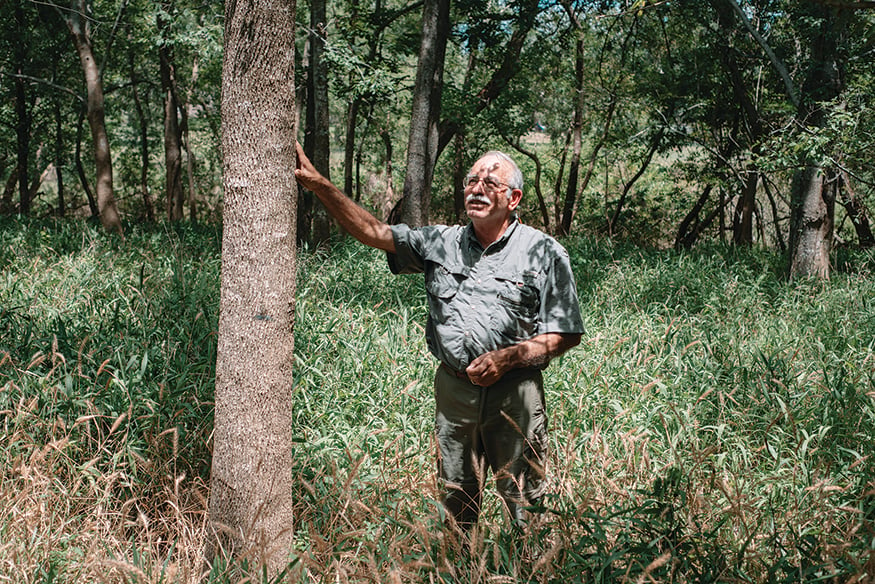
The flat-bottom boat with Spree aboard skirted what’s left of the bridge, destroyed by storms, including Hurricane Claudette in 2003. But Alcoa officials say the containment area on the island itself can withstand a Category 5 hurricane and boast of how it weathered Hurricane Harvey in 2017, which roared ashore 58 miles south at Rockport.
After Harvey, a consultant hired by the company found the average levels of mercury in redfish and blue crabs caught in the ban area had dropped in 2018 and 2019. A company spokesperson, Jim Beck, said Alcoa has fulfilled all of the EPA’s requirements for monitoring mercury in fish, sediment, and the water. It’s not required to monitor the health of birds or people, whose reproductive systems and offspring can be harmed by consuming too much mercury-contaminated fish, other research shows.
The EPA inspected Superfund sites that flooded after Hurricane Harvey and issued a supplemental report for the Alcoa site in 2019. But it has not determined whether Harvey and other storms have pushed hot spots of contaminated sediment deeper into the bay system, as has happened around another notorious Superfund site, the San Jacinto Waste pits near Houston. Nationwide, there’s a lack of resources for follow-up research at sites struck by storms or subject to climate change. In Lavaca Bay, even the longtime fishing ban is unenforced by state game wardens, who admit they never ticket anyone for violating it. And Texas state health agencies have little funding for testing the effects of toxic waste on fish or people around Superfund sites, whether hurricanes strike or not.
State health officials acknowledged years ago that they were never able to adequately study the health impacts of mercury contamination on local residents or fishermen, partly because no one wanted to admit they’d been catching and eating fish from the ban area. In 1998, a separate state study found a cluster of birth defects in the nearby town of Port Lavaca, population 11,000. But it did not explore whether mothers had consumed tainted fish, though mercury exposure can harm fetuses. No state health study has ever been conducted in Point Comfort, where residents frequently report reddish dust drifting from the now-abandoned Alcoa plant site whenever the winds blow hard enough.
The latest study by the Texas Department of Health Services in 2013 found contamination had spread—fish and crab for miles around Lavaca and Matagorda bays contained elevated levels of mercury.
This part of Texas is nationally known for its birds—colonies of herons, ibis, and egrets that congregate to nest each spring. In their environmental impact statements assessing the Superfund site in the 1990s, biologists predicted the birds would be harmed. And sure enough, year after year, volunteers have recorded dramatic declines in the number of water birds nesting on a small string of islands near the Superfund site.
The boat carrying Spree and his friends, all members of the Lavaca Bay Foundation, left Dredge Island in its wake as it powered out to explore one last remaining nesting island near Alcoa. There, water birds are making a last stand in the sand.
If the right storm strikes in the wrong way, things could get much worse at Dredge Island and many other coastal Superfund sites nationwide. The Government Accountability Office (GAO) warned in a report last year that the Alcoa site was among 945 Superfund hot spots across the United States vulnerable to hurricanes, flooding, sea level rise, and wildfires related to climate change.
Many of those hazardous-waste sites are already in peril. An investigation by the Observer and InsideClimate News found that those climate-related threats currently affect at least 49 Superfund sites in 13 states that are located inside 100-year flood plains, regularly flood, and are vulnerable to hurricanes, like the Alcoa site in Lavaca Bay.
The investigation also revealed how the Trump administration terminated a 2014 Obama administration effort to factor climate change into all ongoing Superfund planning.
Under the Trump administration, which is proposing a 26 percent cut in the EPA’s 2021 budget, EPA officials have ignored climate change issues in Superfund site plans and broken promises to communities whose neighborhoods have been affected by sites with highly toxic chemicals, including known human carcinogens. Many of the communities most affected are low-income communities of color.
In an analysis of EPA and GAO data, the Observer and InsideClimate News determined that 713 Superfund sites nationwide sit inside 100-year flood plains and at least 84 sites, among them Alcoa in Lavaca Bay, already flood regularly at high tide or are permanently submerged. Many more are vulnerable to future sea level rise, the data shows.
In coastal states like Texas, Louisiana, Florida, New Jersey, and New York, clusters of Superfund sites sit like loaded guns ready to go off in the next major hurricane. Some are inside heavily populated urban areas or highly sensitive ecosystems that are home to endangered or threatened species.
Climate change only ups the ante. In 2018, the Fourth National Climate Assessment, a comprehensive climate analysis prepared by a panel of scientists representing 13 federal agencies, predicted that hurricanes striking the East Coast and Southern states will become more frequent and more intense, with greater amounts of precipitation. Sea level rise along the Texas Gulf Coast will be twice as high as the global average.
In a statement, a spokesperson said the EPA “recognizes the importance of ensuring Superfund site cleanups are resilient in the face of existing risks and extreme weather events and the Agency has taken measures to include vulnerability analyses and adaptation planning into Superfund activities.”
The recent assaults on Superfund sites by hurricanes Sandy in 2012; Harvey, Maria, and Irma in 2017; and Michael in 2018 stand as a testament to the EPA’s failure to adequately safeguard toxic waste sites from violent storms, said Judith Enck, a former EPA Region 2 administrator. Enck was responsible for a crowded group of Superfund sites in New Jersey and New York; she said the agency “is completely unprepared to deal with climate change and Superfund sites.”
For years, Myron Knudson oversaw the Superfund program as a top-ranking official at the EPA’s Region 6, with clusters of sites in Texas and Louisiana, until his retirement in 2012. Knudson said the decline of nesting birds and other signs of persistent mercury contamination all around Alcoa are reason enough for increased vigilance there and at other Superfund sites vulnerable to climate change. “Mercury is a terrible, terrible element for humans, for animals, for birds, and for insects. It’s just so lethal,” he said.
Jim Blackburn, a longtime environmental attorney based in Houston who has advocated for further cleanup at Alcoa on behalf of Point Comfort residents and environmentalists, said that the agency lacks the funding, political will, and diligence to adequately reevaluate such toxic wastelands.
He’s also skeptical that EPA teams deployed to visually inspect sites after hurricanes and perform limited lab tests can accurately detect lurking damage or leaks. “It’s almost common sense that there’s going to be a breakdown over time,” Blackburn said. “There’s an accident waiting to happen. I’m not sure anybody is on top of that.”
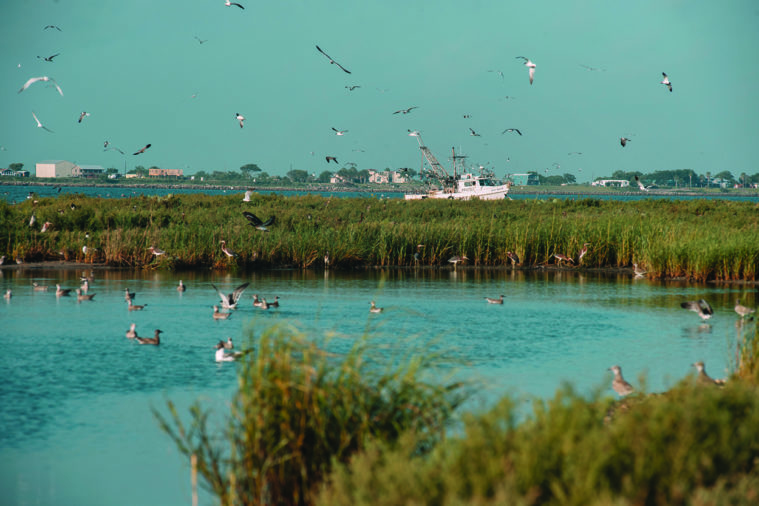
Out in Lavaca Bay, about a mile from Dredge Island, Spree and his friends spotted a lone shrimp boat, trailed by a pair of dolphins, dragging its net near the fishing ban area. Spree, who wore a handmade metal belt buckle with the image of his old shrimp boat, said this shrimper was only trolling for bait.
Beyond the Superfund site, there were once five spots on the Lavaca Bay Spoil Islands—places formed of shells and dredge materials—where tens of thousands of nesting water birds would return each spring. Now, with storms and sea level rise, there is just one island left. Spree looked out at its crescent-shaped oyster shell beach, a hundred yards ahead. As the boat gently came ashore, he could see white ibis crowded together in long strands of grass just beyond the sand.
The island, which has shrunk to less than half its former size and could soon disappear, remains home to nearly all of Central Texas’ nesting white ibis population, making it vitally important, said Brent Ortego, a wildlife biologist based in Victoria. This year, volunteers counted 1,600 pairs of all species—only a third of the birds that nested here in the 2010s, according to tallies Ortego has long kept. And that’s a tiny fraction of the far larger colonies that nested on the spoil islands in the 1990s and 2000s.
Ortego first began participating in Texas’ statewide efforts to track colonial water birds when he worked for Texas Parks and Wildlife. Even after his retirement, he has continued to organize voluminous data on migratory birds collected by armies of volunteers who wade into swamps, take boats, and use drones each May to survey small islands all over the Texas coast. Ortego personally surveyed the nesting sites near Alcoa for years because he considered those disappearing islands so critical. He’s been alarmed by the huge declines volunteers have seen in nesting populations that used to number in the tens of thousands on the string of sandbars and shell bars near Alcoa, though he lacks the research to know whether pollution, erosion, sea level rise, mercury from the Superfund site, or another factor is to blame.
The abundance of laughing gulls is another factor. The sky around Spree’s boat on the beach of the last remaining spoil island was filled with a cacophony of the black and white birds that prey on the eggs of other birds and the fledglings. Those gulls now make up nearly one-half of the island’s dwindling population. Each year, fewer and fewer birds return.
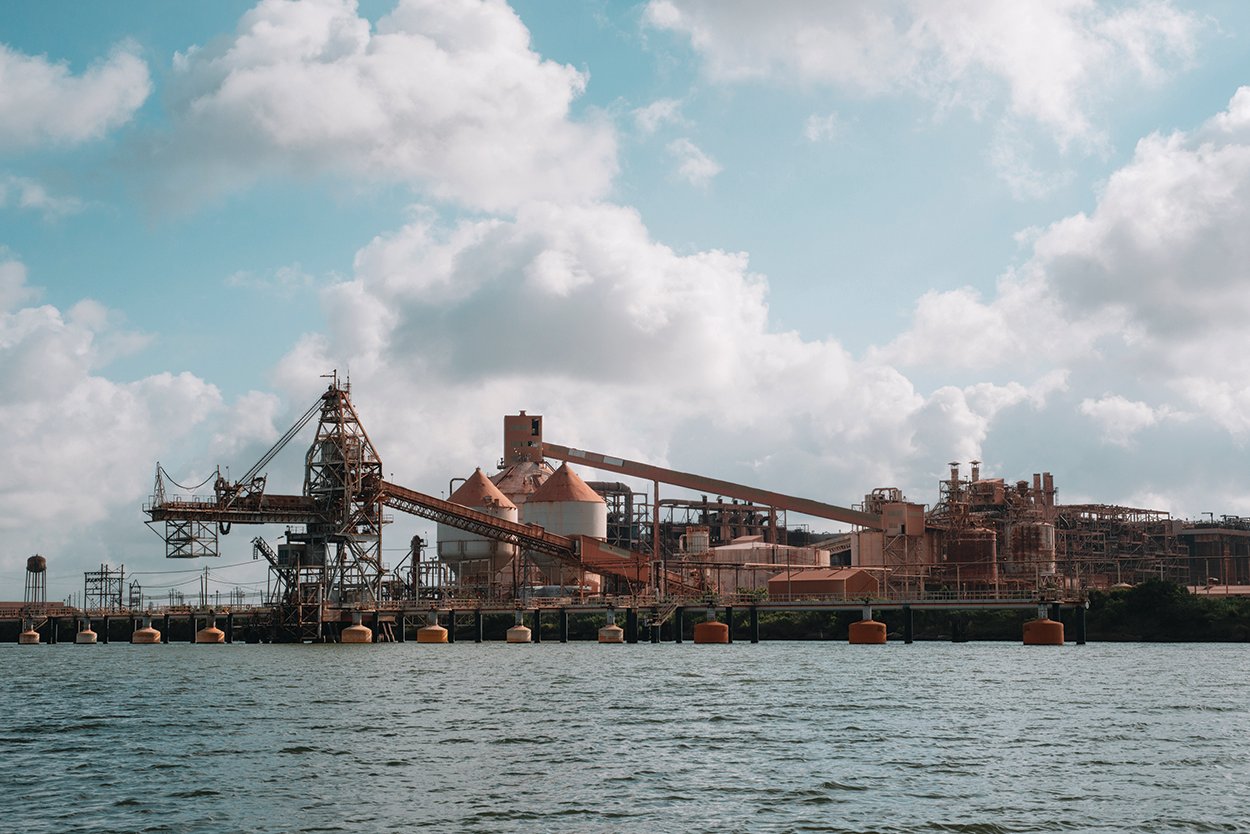
The EPA’s Superfund program was created in 1980 in response to health problems reported after a subdivision and school were built atop the Love Canal, a toxic-waste dump in New York operated by a company later acquired by Texas-based Occidental Chemical. That program has since accumulated a list of more than 1,750 extremely hazardous sites for what the EPA calls the National Priorities List.
Initially, the cleanup program relied on a $1.6 billion trust fund with fees paid by oil and gas companies. But Congress ended those fees in 1995. The Superfund trust fund subsequently went broke in 2003, shifting the burden to taxpayers and forcing the EPA (and the public) to attempt to persuade what the agency calls “potentially responsible parties” to participate.
In 2014, under the Obama administration, the EPA directed its division chiefs to incorporate climate change-related risks into the nation’s environmental programs, including oversight of Superfund sites. Soon after, senior EPA staff began framing an action plan for each multistate region to address vulnerabilities of Superfund sites to climate-related disasters. “The message was clear: We need to take aggressive action now to stave off the worst effects of climate change,” said Betsy Southerland, a former EPA official who worked at the agency from 1984 to 2017.
EPA officials across all regions were expected to adopt enforcement plans to reduce greenhouse gas emissions, slow the effects of climate change, and determine how to harden infrastructure, like Superfund sites, to guard against climate change disasters. But progress was slow. The Obama administration was criticized for cleaning up even fewer Superfund sites than previous administrations.
Then the Trump administration took over, slashing the budget and abandoning the climate change initiative in favor of a focused approach that promised to speed cleanup of high-priority Superfund sites and redevelopment of older sites where cleanup was supposedly complete. Now, the EPA’s national policy contains no reference to climate change at all. “The new administration came in and said we can’t talk about climate change at EPA,” Southerland said. “That was stunning and stopped the work in its tracks.”
Ninety percent of the excess heat trapped in the atmosphere is absorbed by the oceans, and warmer oceans amp up hurricanes, intensifying winds and rainfall, as witnessed in 2017 when hurricanes Harvey, Maria, and Irma flooded more than 252 Superfund sites. A day and a half after Harvey inundated the Alcoa Dredge Island site, the storm parked over the greater Houston area, dropping nearly 60 inches of rain in the greatest recorded rainstorm in U.S. history. It flooded dozens of Superfund sites, many of which are located in communities of color.
Barrett, Texas, a historic African American town with a population of about 3,000, features neat brick houses with large yards, a community center, a county park, and a historic cemetery. Recently, a local group decorated the road beside Barrett’s oldest church with the words “Black Towns Matter.”
Fred Barrett, 67, has lived here all of his life. The town on the banks of the San Jacinto River was named for his great-grandfather Harrison Barrett, who, after emancipation, settled in this unincorporated part of Harris County that’s now part of the sprawling Houston metro region and its major petrochemical complex.
On a blazing July morning, Barrett pulled his SUV up to a state historical plaque that stands outside his original family homestead. He strode through the freshly mowed pasture, sat awhile on the porch of a white frame bungalow that stands on the old homesite, and pointed out the graves of his great-grandparents Harrison and Annie.
Barrett remembers when a dump built on the sandy riverbanks by a company called French Limited operated so near the farm that he could hear the rumble of tractor trailers hauling waste from local refineries and chemical plants down the narrow Gulf Pump Road to a foul pond.
Between 1966 and 1971, 70 million gallons of toxic waste were deposited at that site. Government records show that more than 90 companies dumped there, including French Limited, Chevron Phillips Chemical, ExxonMobil, Halliburton, and Texaco.
In 1993, the EPA’s original plan designating French Limited a Superfund site called for those responsible parties to clean up contaminated groundwater to the national drinking water standard. Back in the 1990s, the companies had pumped and treated the groundwater under original requirements imposed by the EPA, records show. But they later abandoned that effort.
In 2014, when the Obama administration directed EPA officials to beef up plans at all Superfund sites vulnerable to climate change, there was little follow-up at many sites. Instead of improving cleanup at French Limited, the EPA proposed relaxing the rules for the site, which is in a 100-year flood plain. The companies argued that the original goals were unachievable and proposed abandoning the cleanup. Instead, they’d just keep monitoring contaminated groundwater plumes at the site for contaminants that included known carcinogens like benzene and heavy metals like arsenic.
“They’re going to let Mother Nature clean it up, and that’s a hell of a thing to say,” Barrett said.
He and many other Barrett residents worried about the flow of contaminated water and the toxins in groundwater from the French Limited Superfund site, which often floods. They contacted Amy Dinn, a Houston attorney who runs the environmental unit of the nonprofit Lone Star Legal Aid, to protest. Dinn sent a letter to EPA with residents’ questions. But the response from the EPA has been slow—a single staff member often juggles multiple sites in different phases in the cash-strapped Superfund program.
While the historic Black town has relied in recent decades on a public water system, Barrett and some older residents grew up drinking from shallow wells they fear were contaminated by the groundwater plume under what became the Superfund site.
Texas state health authorities have conducted two cancer cluster studies in neighborhoods near the San Jacinto River. One study, which focused specifically on census tracts around the French Limited site, found elevated rates of lung cancer. Neither delved more deeply into the possible links between elevated cancer rates found among both children and adults living near any of the four nearby Superfund sites. “The study was published, but nothing came of it,” Dinn said.
Fred Barrett wonders why that study didn’t focus on long-term residents of Barrett and nearby Riverdale, especially those who drank from shallow wells. He and others say they have lost too many relatives to cancer. “My mom died of lung cancer and she never smoked a day in her life,” he said.
The original cleanup plan for French Limited also included a provision for improving the environment, since responsible parties admitted polluted wastewater often overflowed into the river. They agreed to purchase 25 acres to create a marsh preserve 10 miles downstream—inside what had been an upscale, mostly white subdivision where oil executives lived before the neighborhood was wrecked by a hurricane.
Years later, Barrett is still flummoxed by how the money went to a formerly white area so far from the Superfund site while his majority-Black town got nothing.
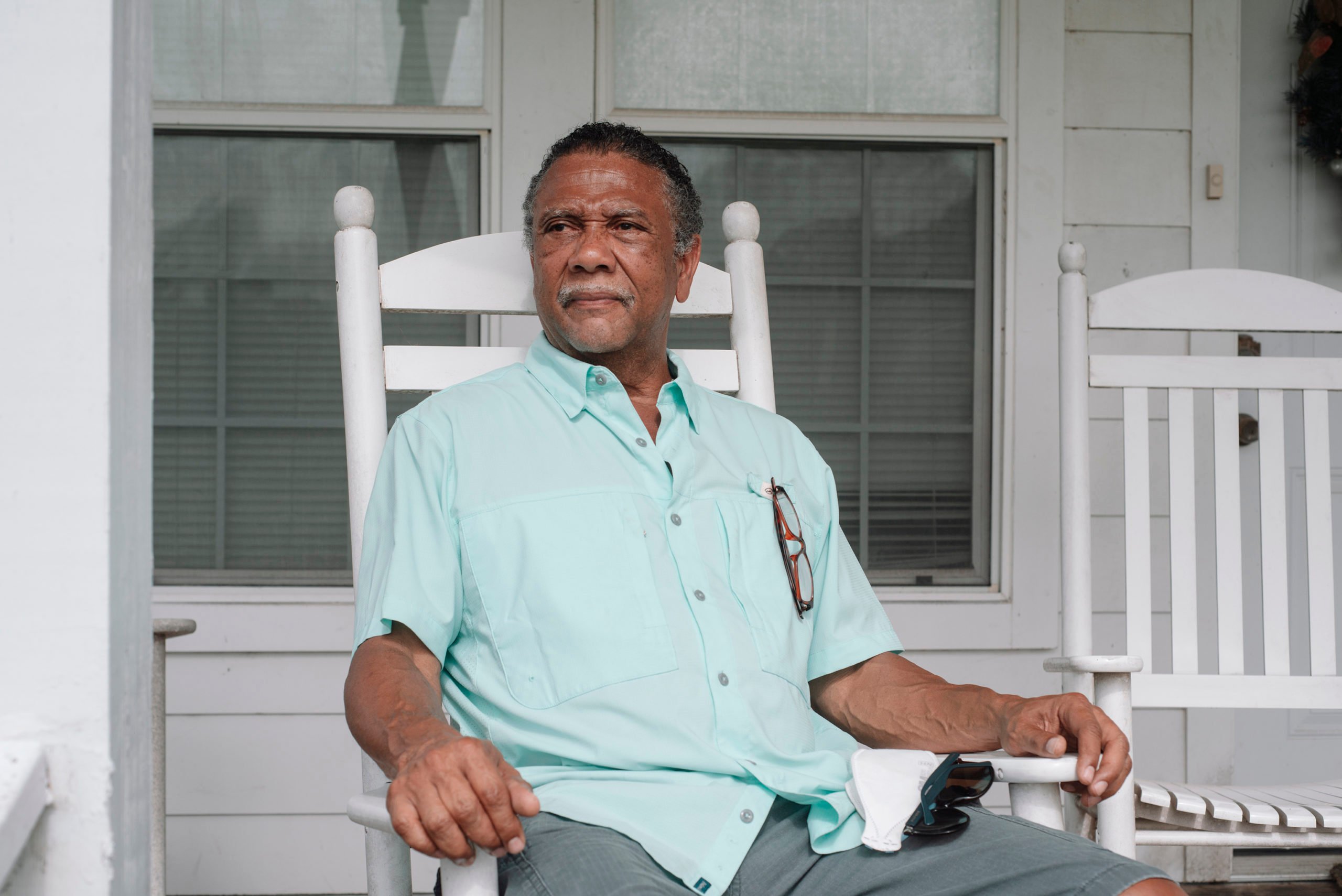
The Observer and InsideClimate news found that climate-related threats at the French Limited and Alcoa Point Comfort/Lavaca Bay Superfund sites in Texas are replicated at other hazardous sites across the country.
Many other sites imperiled by climate change present increasing dangers to humans and the environment from highly dangerous substances like mercury, arsenic, and dioxin that remain in soil and water for decades. In several cases, toxins already appear to have been dispersed by storms, tides, and floods.
The LCP Chemical Superfund site, an abandoned industrial facility on 670 acres of marshland in Brunswick, Georgia, is one of the most vulnerable. A picturesque expanse of tall cordgrass broken by silvery threads of meandering rivers and creeks, the site is frequently inundated by seawater—a regular and repeating occurrence that hastens the release of toxic mercury.
As in Lavaca Bay, the poisonous chemicals taint the fish and shellfish consumed by residents, putting them at risk for reproductive problems, as well as liver and kidney damage. The Georgia site is one of dozens threatened by climate change where the EPA also admits that exposure to toxic chemicals could damage human health and remains uncontrolled. LCP Chemical is also among 49 sites nationally, like Alcoa, that face a triple threat of climate-related dangers. They are vulnerable to hurricanes, located in 100-year flood plains, and are regularly flooded—threats addressed in nine regional climate adaptation plans drafted by the Obama administration in 2014.
Still, six years later, thousands of pages of planning documents for the LCP site don’t discuss threats from climate change. “You won’t see anything about climate change because they don’t talk about it,” said Rachael Thompson, executive director of the Glynn Environmental Coalition.
After some dredging of the site was complete, the EPA approved a final remediation plan for much of the marsh that included placing a 6-inch covering of sand over the toxic sediment. The EPA concluded such a remedy was “generally accepted as reliable containment for contaminated sediment.”
One of Texas’ leading flood specialists, Philip Bedient, a professor of civil and environmental engineering at Rice University, questions the finding. “The proposed cap concepts do not recognize nor address the impact of sea level rise on the long-term effectiveness of these concepts to prohibit the escape of contaminants within the marsh,” he concluded in a report.
Meanwhile, in densely populated Bergen County, New Jersey, toxic mercury sediments are regularly scoured from another Superfund site, called Berry’s Creek, whenever the creek swells with tidal surges from the Atlantic Ocean or is upset by hurricane rains. The EPA acknowledged in a 2017 review that despite remediation remedies for the Berry’s Creek site—earthen caps over some contaminated soil and barriers to deflect rising water—it may not be fully protected. The site “has the potential to be impacted by increased storm intensities and frequencies as a result of climate change,” the agency’s assessment concluded.
A dozen miles by boat from the Alcoa Superfund site in Point Comfort, out where Matagorda Bay meets the Gulf of Mexico, Chester Island remains so resplendent with wildlife that environmentalists see it as a beacon. This, they say, is what the fight to cleanse the bay is all about.
The island’s sandy beaches and shrubby trees are chock-full of migratory birds, beak to beak and wing to wing, throughout the nesting season from February to August. Though surrounded by mercury-contaminated waters, the island has been key to the recovery of the brown pelican in Texas, an iconic species once on the verge of extinction.
Pelicans seem to know Chester Island has been reserved for them. It’s been posted with No Trespassing signs by Tim Wilkinson, dubbed the island’s warden by the Audubon Society.
Thousands of pelicans occupy the scrubby trees here. A squadron of juveniles, 3 months old in June, staged what looked like a flight school stretching their wings in unison on the sand. Throngs of black-crowned night herons, white egrets, and many more colorful species perched on branches and poked their curved necks out of nests during a recent visit.
For Wilkinson, his work on the island is a vocation—a role he learned and later inherited from his late father-in-law, Chester Smith, for whom this island was renamed. Smith played a key role in volunteer efforts to bring back brown pelicans on the Texas coast. In the 1980s, Smith started his efforts here with only five pelicans.
During Wilkinson’s tenure, volunteers have begun to use drones to track the squawking, nesting, flying, flapping, feeding birds on the 80-acre island. This spring, volunteers counted a virtual city of 6,200 pairs of nesting pelicans, along with more than 10,000 terns, rarer black skimmers, and a vast assortment of herons and ibis.
But between the grasses and trees, Wilkinson finds bones and skulls of birds too. He and other Audubon volunteers wonder what impact the Superfund site might be having even here. In Florida and other states, wildlife biologists have been monitoring the impact of mercury on bird colonies by collecting feathers or blood from fledglings. No studies are being done on how to protect birds (or people) from the mercury present in fish and crabs they consume in the entire Lavaca-Matagorda Bay system.
Chester Island, like other crucial coastal rookery islands, is existentially threatened by sea level rise. But it remains a crown jewel for birders that stands out even in coastal Texas counties that have bragging rights to some of the largest and most varied bird counts anywhere in the United States.
All these birds crowded onto one small island—downstream from a Superfund site—are a reminder of what’s at stake if threats posed by climate change remain unaddressed and toxins continue to spread.
This story has been updated to clarify the Alcoa plant’s primary purpose.
